Plants are susceptible to attack by various pests, which can not only worsen their condition, but also completely destroy them. It is important to know how to get rid of spider mites as they are dangerous and can cause serious harm. There are a few effective methods fight him.
What does a spider mite look like?
A polyphagous pest that can settle on a large number of crops is a description of a spider mite. The main characteristics include the following information:
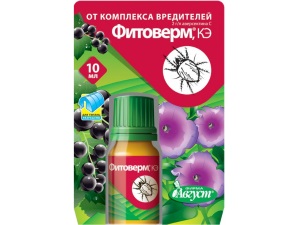
Why does a spider mite appear?
There are several reasons that can provoke the appearance of a pest:
For more than a dozen years, to get rid of various pests, different folk methods, which in most cases are absolutely safe for humans. Here are a few ways to easily get rid of spider mites:
When figuring out how to get rid of a spider mite, it is worth noting that it is necessary to take 200 g of soap for 10 liters of water. Up to three sprays are carried out, between which a week should pass. With severe lesions, spraying can fix the effect of previously applied insecticides. can be used both to get rid of the problem, and as a preventive measure.
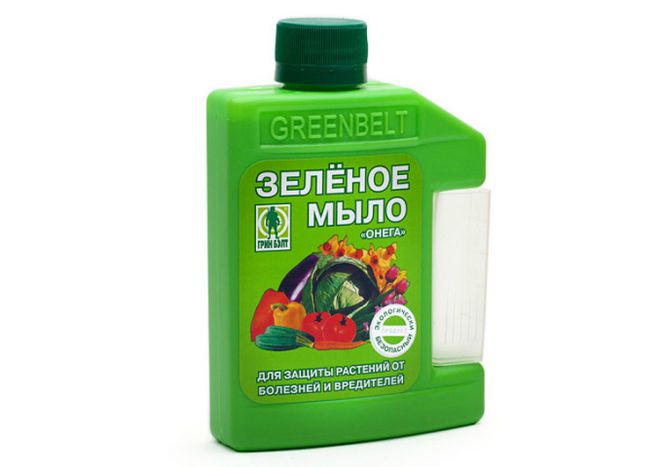
Onion infusion from spider mites
In folk methods for getting rid of pests, they often take onion peel, which contains useful vitamins and macronutrients, and it also contains a substance that effectively copes with pathogenic microbes, both on the plant and in the soil. used onion peel from spider mites in tincture, for the preparation of which it is necessary to pour 100 g of husks into 5 liters of water. The duration of the infusion is five days, and then it is filtered and used for spraying.

Alcohol from spider mites
Among folk remedies, alcohol processing is popular. To get rid of arthropods, they take undiluted medical alcohol, which is destructive for pests, but at the same time it has no effect on eggs, so this method must be combined with other options. To remove the spider mite, a measure of struggle with alcohol involves rubbing the leaves with a moistened cotton swab. Since alcohol evaporates quickly, it does not have time to harm the plant, but it is not recommended to use this method on thin leaves.
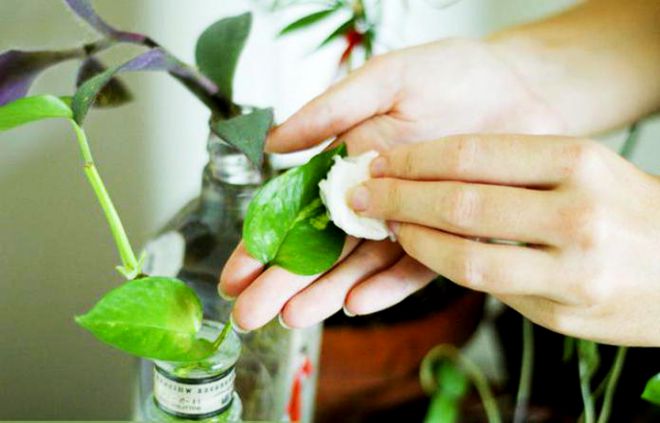
"Dichlorvos" from spider mites
The most common remedy in the 90s, but because of the unpleasant smell, many refuse to use it. To get rid of the problem, "Dichlorvos" can be sprayed if the ovary is just beginning to form. First, you need to put a garbage bag on each bush, and then spray a remedy for spider mites inside. Be sure to tie the ends to prevent Dichlorvos from coming out. Leave everything for three hours, and after that it is recommended to wash off the remnants with plain water.

Preparations against spider mites
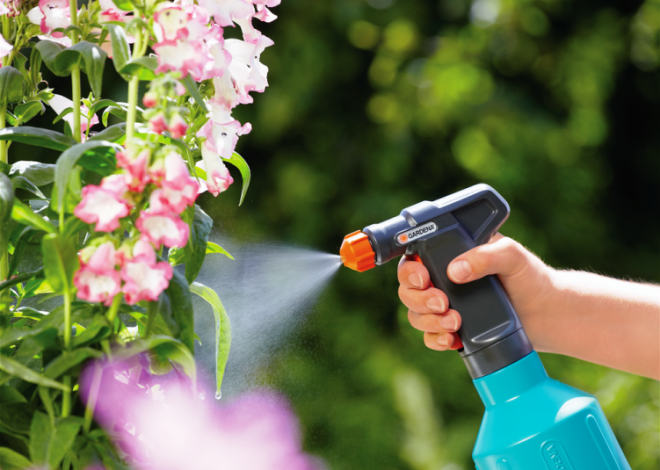
"Karbofos" from spider mites
This tool belongs to organophosphorus compounds, which is easily soluble in water, forming a stable emulsion. When figuring out how to remove a spider mite using Karbofos, you should indicate the following important information:
This is a very popular tool, which is characterized by the following properties:
- It has a high distribution rate of the drug. During the first hour after application, it already penetrates into the tissues by 16%.
- from spider mites can be introduced into the soil and onto the plant. Duration of action - up to 28 days. Note resistance to heat and drought.
- The product is highly soluble in water, but at the same time has a high level of resistance to washing off.
- If you are interested in how to get rid of a spider mite, it is important to know that it is necessary to take warm water for spraying, given that 4 g should fall on 5 liters. Only a freshly prepared solution can be used. To apply "Aktara" to the soil, you need to use 1 g of the drug per 10 liters of water. In case of severe infection, both treatment options are combined.
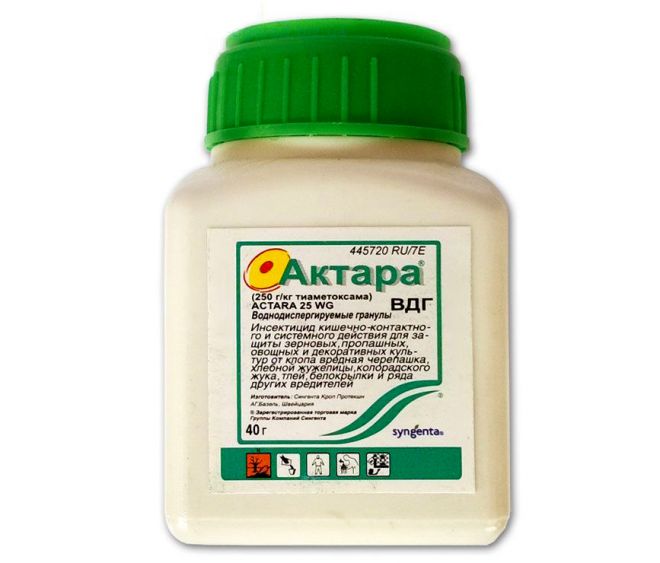
"Spark" from a spider mite
The presented preparation helps to get rid of more than 60 types of pests. "Spark Double Effect" can be taken for processing flower, berry, vegetable and fruit crops. Note that not all spider mite remedies include a special potash fertilizer that helps the plant quickly restore damaged parts, and this drug has it. To prepare the solution, it is necessary to dissolve 1 tablet in 10 liters of water.
"Anticlesh" from a spider mite
This drug can be used both in open ground and in greenhouse conditions, but it is not suitable for home conditions. The duration of the protective action is 15 days. If a spider mite is present, then the treatment of the plant can be carried out with the help of "Antiklesch", which acts quickly and can be used in hot weather. To understand how to quickly get rid of a spider mite, it is important to consider the rules:
- To dilute the product, take 10 ml per 10 liters of water. Be sure to mix everything thoroughly.
- Spraying should be carried out only with a freshly prepared solution early in the morning or in the evening, when there is no strong wind.
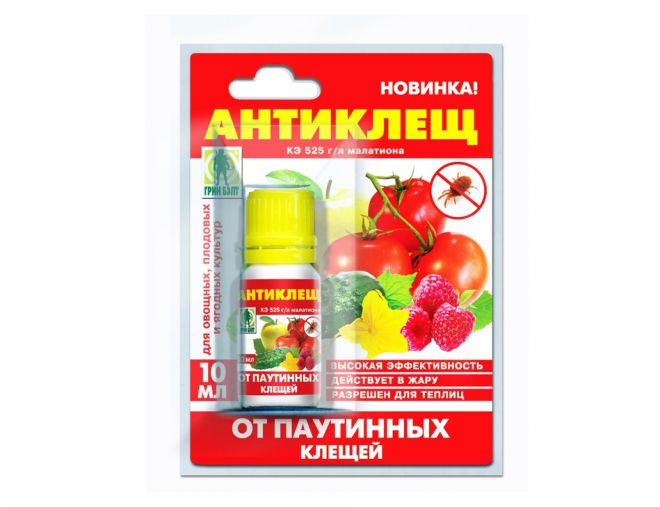
Spider mite prevention
- The purchased plant should not be immediately placed next to others and it is necessary to quarantine. It should last 3-4 weeks. For greater certainty, it will be useful to treat the leaves and stem with acaricide several times during quarantine.
- Soil mixtures purchased or made by hand must be processed. For example, you can calcine them in the oven, pour over boiling water or steam them in a water bath. It all depends on the chosen soil.
- It is necessary to ventilate the room as often as possible, and during the heat to carry out frequent watering and spraying.
- To prevent the appearance of a spider mite in the garden, it is recommended to regularly remove weeds, which are an excellent breeding ground for pests. It is also important to remove plant debris, such as old dried shrubs.

Indoor plants are a wonderful decoration for every home and interior. In addition to making the atmosphere in the room more comfortable, their foliage also acts as an air purifier. But you need to be able to choose the right flora for your home, as some types of plants are not suitable for keeping them in a residential building. For example, those that are most attacked by insects and pests.
Home flowers are often attacked by spider mites.
Thus, if a spider mite settles on one flower, other plants will also be at risk.
It can be difficult to get rid of this infection, therefore, as soon as indoor plants the first signs of the pest become visible, urgent action must be taken: sometimes this is the only chance to save the flowers before they are eaten.
Certain plants suffer from the action of mites much more often than others. Basically, the problem affects ficuses, palm trees, lemons and cacti. However, if the tick spreads too much around the room, it will begin to eat everything that is in its path, that is, any green crops. 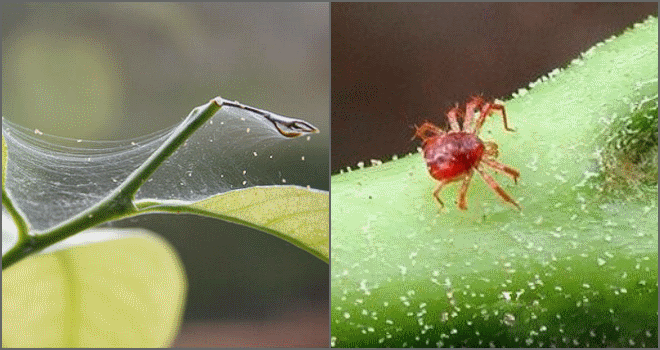
Particularly unpleasant is the fact that it can be dangerous to fight spider mites with insecticides and various chemicals.
But, if there is no desire to part with room greens, it is best to apply folk remedies. They are safe and quickly solve the problem with spider mites. At the same time, it must be remembered that the effect of such methods will be sufficient only if the treatment of the plant is started at the initial stage of creating a colony of ticks.
How to recognize a spider mite?
A person who is not indifferent to his indoor plants should periodically give them an hour and a half. This time should be spent watering, spraying, rubbing the leaves and tilling the soil.
If the owner of the house looks at his houseplants from time to time, he will not be able to miss such a problem as defeat spider mite.
The insect itself is very small, so it is difficult to determine its presence with the naked eye. But by the appearance of green pets, it will immediately become clear that trouble has happened to them.
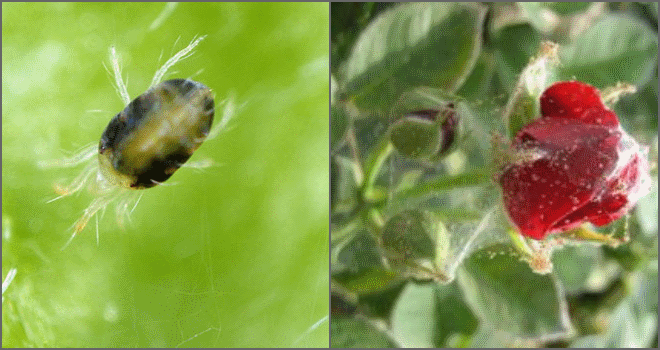
From one infected flower, the infection can spread to another.
The main trouble is that these insects eat a lot.
They are able to destroy a healthy plant very quickly. Moreover, spider mites also multiply actively, so if they were noticed by a person, you need to act immediately.
After the mite infects the plant, it will be wrapped in a thin cobweb.
How do mites appear on flowers?
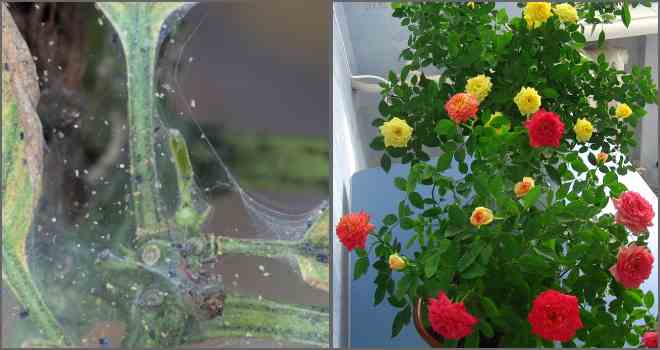
Most often, plants become infected from a new specimen.
In order to prevent such a development of events, it is worth sending new flowers that arrived from the store or were received as a gift in the first place to quarantine.
If there are no signs of illness in 3 weeks, you can safely transfer the new plant to a predetermined place.
How to protect yourself from ticks?
Especially careful you need to be those who do not buy ready-made soil, but try to make it on their own. When collecting stones, sand or tree bark on the street, everything must be handled as carefully as possible so that no infection enters the house and does not harm the flowers.

Roast the soil before use
As for the moss, it must be poured with boiling water, after which it will be necessary to wait for the liquid to cool completely. Then the moss is taken out of the container and dried.
Prevention measures should also include quarantine for new plants. They must be isolated in a normal environment. You can wait about 3 weeks. If during this time no signs of illness appear, the flower is transferred to the common room. Some flower growers treat new plants with acaricide, seal them in a plastic bag, and then leave them for 3 days. With this treatment, the spider mite has no chance of survival.

To fight the tick, special chemicals will help
The main rule for getting rid of mites on plants is that unbearable conditions must be created for their existence. In this case, adults and eggs will die, and new pests will not develop.
But it must be borne in mind that with a strong infection with “grandmother's methods”, it will not work to get rid of the spider mite.
It is important to process not only the plant itself, but everything around it, since ticks can be at a fairly large distance. If an insect is found on a flower, the pot must be removed to a separate room. There, the plant and the dishes in which it is located are processed. The place where the flower used to stand must be thoroughly cleaned with soapy water. If we are talking about the window sill, you need to wash not only it, but also the glass. 
Chemical treatment is best done using plastic bags. A plant with a pot is packed in a film, and then sprayed with a special preparation.
After that, the leaves need to be washed and you can return the plant to its place.
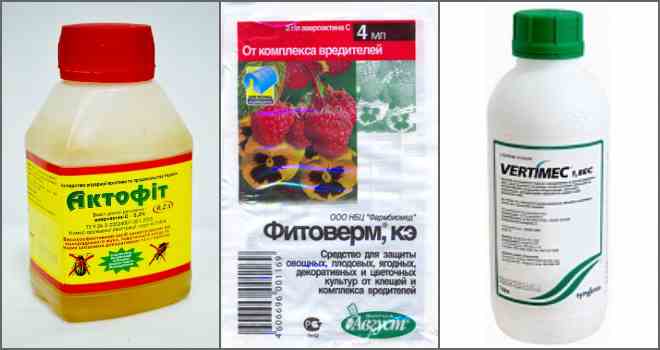
Can flowers be treated with acaricides?
The most popular chemicals are Phytoferm, Vermitek and Aktofit. They are quite effective, but require several treatments after a certain period of time. This is due to the fact that these drugs destroy only adults. They can't handle eggs. Therefore, it will be necessary to eliminate adult ticks, then wait until their offspring hatch, and then proceed to re-treatment.
If one of the chemicals is chosen by the grower, all the rules for working with it must be observed. This applies primarily to safety for humans and animals.
All manipulations must be carried out with gloves and a protective mask.
In addition, it is necessary to take into account temperature regime. The room must be at least 20°C. Otherwise, there will be no result from the use of chemistry. After the room warms up, the mites will crawl out again and begin to multiply further. For more information about the fight against spider mites, see this video:
But it is very poisonous, so this tool can not be used indoors. Moreover, not every plant will endure such a strong chemistry.
When choosing chemical to destroy the spider mite, you should pay attention to the class of the remedy. There are 4 of them in total. They must be indicated on the packaging. The fourth degree is the least toxic to humans, and the first is the most poisonous, requiring the use of gloves, a mask and protective clothing, as this substance can harm health.

Pay attention to the class
Most opt for inexpensive drugs. The choice of such funds in specialized stores is very large. Within 30 rubles, you can buy chemicals such as Kleschevit, Akarin, Neoron, Akletik and Karbofos. The latter is very sharp and bad smell so it should not be used indoors.
For example, the first spraying of indoor plants can be done using Fitoverm, Akarin, Kleshchevit or Apollo. After about a week, the effect should be enhanced by the use of Oberon, Neoron, Sunmite or Envidor.
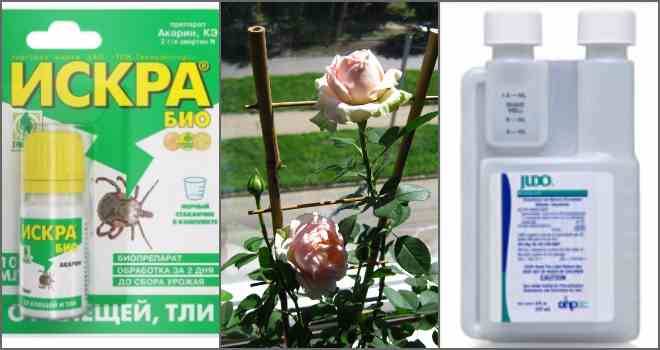
Can be combined
If a lot of flowers are infected, it is worth taking several preparations. For each plant, you can use a different substance, and then compare the effect. So it will turn out to choose the most effective remedy for the destruction of the spider mite.
What should be considered before processing plants?
Before using chemistry for the treatment of indoor plants, you must read the instructions. Everything should be clearly described in the annotation, starting from the dosage of the drug and ending with the methods of protection for humans.

Treat plants at noon
It is also necessary to take into account such a moment as the degree of infection of the plant. Some flowers can no longer be helped, so they just need to be thrown away, or even better, burned. In the case when the flower does not have a lot of cobwebs and affected leaves, you can put a piece of fresh cucumber into the ground a few minutes before the start of processing. This will certainly attract adults, which in one place will be much easier to destroy.
The best time to treat houseplants from spider mites with chemicals is 12 noon.
In cloudy weather, this procedure should be postponed to lunchtime.
Folk methods
Home remedies are very popular. They are safe and very cheap. However, it should be borne in mind that with a strong infection of plants folk recipes may be powerless. Moreover, there are some types of plants that do not tolerate the treatment of home remedies.
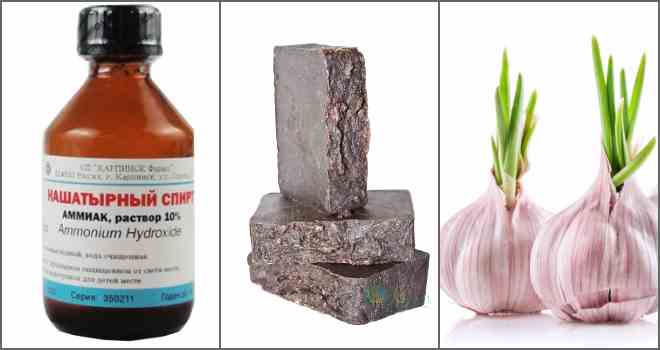
Folk remedies can also be effective
The most effective options are: a hot shower, an alcohol rub, and an onion-garlic tincture. The use of alcohol will be beneficial for plants with large and broad leaves. Both boric and ammonia are suitable. Do not apply rubbing to those flowers that have pubescent leaves. Monsters, ficuses, date palms and other thick-skinned plants tolerate this procedure well. Ammonia perfectly removes spider mites at all stages of its development.
The complexity of this method lies in the fact that it is not always possible to get a cotton swab to hard-to-reach places. This problem happens with hot showers too. Water allows you to wash off the ticks, but some will definitely remain in secluded places.
Alcohol helps well not only for disinfecting greenery, but also for cleaning the windowsill, window. This will allow you to quickly get rid of such a problem as a spider mite in the house.

Fuchsia and petunia cannot be treated with soap
For example, you can treat delicate flowers with soapy water. To do this, you need to take laundry soap, but tar or potash is better. If there is nothing like this at home, dishwashing liquid will do.
Soap solution must be treated not only with a flower, but also with a pot, window frame and window sill. It is important to create a good and thick foam.
Many flower growers are against the use of soap solutions for the treatment of plants. In some flowers, this treatment can block the stomata, which will prevent them from growing and developing further. That is, it does not matter here - soap or ticks, the greenery will not have a chance of survival.
Garlic tincture is considered the safest remedy for spider mites.
To prepare this substance, you need to take a large head of garlic, pass it through a meat grinder, and then pour water and leave for 5 days. The finished solution is filtered and placed in a spray bottle. Spraying is carried out 1 time per day until there is no trace of ticks left. In addition, you can use garlic with onions in the complex. If you add an additional few drops of iodine, the effect will be much stronger.
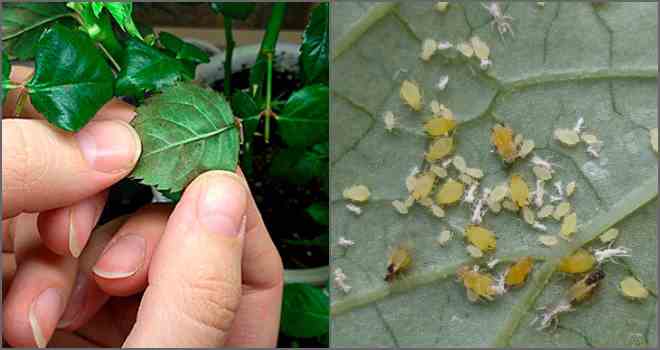
Destroy the mite potato tops and chili peppers
Tincture for the destruction of spider mites can be prepared from potato tops, peppers, tomatoes or celandine. Sorrel with dandelion will also benefit.
Before using folk methods, it is worth analyzing the situation. If the plant is too heavily infested with mites, natural insecticides will not help. Here you need to either use dangerous chemistry, or simply get rid of the diseased flower. Breaking up can be hard, but remember that it's for the sake of healthy plants.
— malicious pest plants. It actively feeds on juice, causing the affected parts to dry out. At the same time, the tick is highly prolific - one female hatches hundreds of eggs in a couple of weeks of life.
When dealing with these pests, it should be borne in mind that the usual chemical insecticides have absolutely no effect on them. After all, ticks are not insects, but arachnids.
Want to know more? Subscribe to our VK public, there is all the most delicious from the editors and interestingness from readers:
In contact with
Special preparations are used against them - acaricides or insectoacaricides(they work against ticks and insects). Are there special remedies for spider mites?
List of effective drugs
Whether there is a the best remedy from spider mites? List the most effective chemical and biological preparations for spider mites.
Chemical:
Biological:
- Agravertin;
- Akarin;
- Fitoverm.
Description of drugs
Aktara
Aktara's agent against spider mites contains thiamethoxam from the group of neonicotinoids and is not an acaricidal agent.
According to official data, it does not affect ticks, but many growers have noticed reverse effect.
After treatment with Aktara, not only insects die, but also ticks - phytophages.
Fitoverm
Biological insectoacaricide, belongs to the 4th generation of biological products. Fitoverm from spider mites has a very wide range of effects, it works against mites and many insects.

Antiklesch and Fufanon
Two insectoacaricides produced by different companies containing the same active ingredient at the same concentration. Because of this, the drugs are identical in action and other parameters.
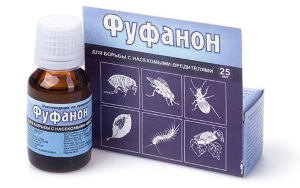
Actellik
Insectoacaricide from the group of organophosphorus compounds. Is also fumigant, penetrating through the respiratory openings.
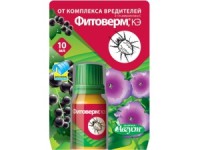
Apollo
Acaricide with ovicidal property by destroying the eggs. He does not kill adults, but sterilizes them, depriving them of the ability to reproduce.
- Release form. Suspension concentrate, packaged in bottles of different volumes.
- Compound. The main substance is clofentezin, concentration 500 g/l.
- The mechanism of influence. Passes through the intestinal and contact methods into the body of ticks and sterilizes them, disrupting the normal functions of the reproductive system. It has a highly toxic effect on eggs and larvae, destroying them.
- Duration. It works 2 times longer than other acaricides - the protective period is about a month.
- Compatibility. Compatible with non-alkaline growth accelerators.
- When to apply? Under standard conditions - in the absence of precipitation, wind and high solar activity. Use at home is not prohibited, it is recommended to use a respirator and gloves when working with the drug.
- How to prepare a solution? Pour 2 ml of the product into 5 liters cold water, stir. This is usually enough to process 10 sq.m. landings.
- Mode of application. Careful spraying of all plant surfaces, trying to treat even hidden areas. How better bush moistened with the agent, the more likely it is to destroy the entire pest colony.
- Toxicity. Apollo is practically harmless to bees and other insects, toxic to humans and animals, but very slightly. Belongs to the 4th class of toxicity.
Neoron
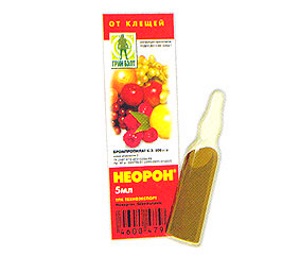 Innovative a drug that is guaranteed to reduce the colonies of any ticks - vegetarians.
Innovative a drug that is guaranteed to reduce the colonies of any ticks - vegetarians.
- Release form. Emulsion concentrate, packaged in ampoules with a capacity of 2 and 5 ml.
- Compound. The main substance is bromopropylate. Concentration 500 g per liter.
- Mechanism of influence. It is used for contact penetration, after which it disrupts the activity of many systems of the tick's body.
- Duration. Depends on and varies from 10 to 40 days.
- Compatibility. Combines great with modern fungicides and insecticides. It is not recommended to mix with other acaricides and alkaline agents.
- When to apply? At the time of application of the acaricide and 3-4 hours after that, there should be no wind, precipitation, high humidity and strong solar activity. Great for use in the home, however, before treatment, protect the skin with clothing and remove animals and children from the premises. After the procedure, make a wet cleaning to avoid contact of the drug with the skin.
- How to prepare a working solution? Depending on the number of pests, use from 10 to 20 ml of the product dissolved in a bucket of water. This amount is enough to process 10 bushes, 2-5 trees or 100 square meters. m of landing area. Storage of the solution is allowed no longer than 2 hours.
- Mode of application. Since the path of penetration into the body of mites is exclusively contact, it is very important to wet all accessible parts of the plants well. And do not allow the drug to drain to the ground.
- Toxicity. It is slightly dangerous for insects, as it has low toxicity, it is classified as class 4. May cause severe irritation to the skin or mucous membranes in humans.
Omite 30 and 57
Very efficient acaricide, available in different dosages. In this it differs from other drugs.
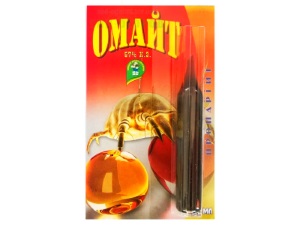
An experienced florist will tell you how to properly use drugs against spider mites in this video:
Leave a message and your contacts in the comments - we will contact you and together we will make the publication better!
It would seem that flower growers who have been breeding plants for more than a year know everything about protection against pests, and try to prevent these pests from starting with preventive measures. But despite the fact that we create the conditions necessary for plants, properly water and spray, fertilize and transplant, as required by agricultural technology, all the same, our green pets get sick from time to time. It’s just that there are pests that can appear even with careful and constant care, and spider mites are just one of those.
In fact, there are a great many varieties of ticks in nature, and, oddly enough, some of them are absolutely necessary. For example, soil mites are needed to support the processes of decomposition in the soil and the formation of a nutrient medium.
Listen to article
Types of ticks
But today we will talk about harmful spider mites, of which there are also several species, and all of them are dangerous for plants.
Ticks are small, up to 1 mm in size (up to a maximum of 2 mm) sucking arthropod arachnids. They are transparent, milky, yellow, red or orange.
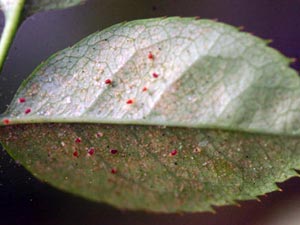 Like all mites, the spider mite is a sucking arachnid. Their harmfulness lies in the fact that, feeding on the juices of the plant, they deprive it of its strength. The first signs of the appearance of mites are small bright dots on the surface of the leaves - traces of punctures.
Like all mites, the spider mite is a sucking arachnid. Their harmfulness lies in the fact that, feeding on the juices of the plant, they deprive it of its strength. The first signs of the appearance of mites are small bright dots on the surface of the leaves - traces of punctures.
More common than others is the red spider mite. It is this pest that starts in my favorite balsams when I take them out into the open air in the summer. No matter how I struggled with this scourge, anyway, by the end of summer, just after a period of intense heat, the leaves begin to grow into cobwebs - this is the work of ticks. The web is a product of their vital activity, but it is not dangerous for the plant. The main trouble is the tick itself, like a vampire, it sucks the juices of the flower.
Among the mites that are dangerous to plants, in addition to the common spider mite, there is an Atlantic spider mite. If you breed exotic types of flowers, you can get acquainted with flat mites. They are especially fond of cacti, different types citrus and ficus, euonymus, but do not disdain and simpler flowers.
And I would call the most insidious of sucking pests root and bulbous mitesdamaging the underground parts of flowers. More precisely, destroying, since it is almost impossible to notice this microscopic insect under the ground in time, and as a result, when you dig out, you get a eaten onion or tatters instead of roots.
Reasons for the appearance of spider mites
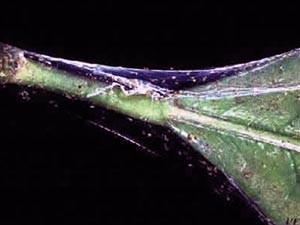 We all take care of our flowers, protect them, but sometimes conditions do arise that contribute to the appearance of a spider mite. For example, if the air in the room is dry and warm, and in apartments with central heating it is just that in winter. Solution: either constantly spray the flowers, or buy a humidifier.
We all take care of our flowers, protect them, but sometimes conditions do arise that contribute to the appearance of a spider mite. For example, if the air in the room is dry and warm, and in apartments with central heating it is just that in winter. Solution: either constantly spray the flowers, or buy a humidifier.
Spider mites like to settle in old dried leaves that you did not remove in a timely manner, and then move to the plant. Dust on the leaves is also a comfortable environment for mites, so try not to let your flowers get covered in a layer of dust.
The first symptoms of plant damage by mites
Be careful not to miss the first symptoms of a spider mite attack on a flower: first, small discolored dots appear, which can grow to the size of spots, a cobweb appears on the back of the leaf, the leaf itself folds. New mites appear in the web, and meanwhile the leaves are already falling off, the plant is weakening, withering and may die.
Ways to deal with spider mites
Real flower growers do not like to resort to chemicals insect control. I don’t like it either, but in the case of a spider mite, such a measure is completely justified.
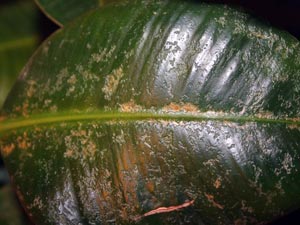 Of course, if you notice the disease on time, at the stage of the first single small puncture points, then you can get by with treating the plant with a solution of insecticidal soap: rub it finely, dissolve it well in water and thoroughly rinse each leaf of the damaged plant on both sides. In addition, you need to treat the flowerpot and the place where the flower stands with a solution.
Of course, if you notice the disease on time, at the stage of the first single small puncture points, then you can get by with treating the plant with a solution of insecticidal soap: rub it finely, dissolve it well in water and thoroughly rinse each leaf of the damaged plant on both sides. In addition, you need to treat the flowerpot and the place where the flower stands with a solution.
But the problem is that most often we notice the disease already when the plant changes its appearance: spots appear on the leaves and cobwebs appear on their undersides. And the ticks are uncountable. Therefore, it is necessary to use insecticides. Now there is a very large selection of necessary drugs: fitoverm, neoron, fufanon, agravertin. I personally use actellik, which, although not safe for people and animals, but after treatment with actellik, spider mites will not be on my flowers for a long time.
I also heard about the use of special sticks: Plant-Pin and Etisso. They are stuck into the soil with an infected flower, and the active substance (poison against ticks) dissolves when watering the soil and is absorbed by the roots of the plant. Poison sticks are especially convenient for treating violets, which do not like wet spraying. Unfortunately, I have not yet had to use these drugs.
How to treat plants for ticks
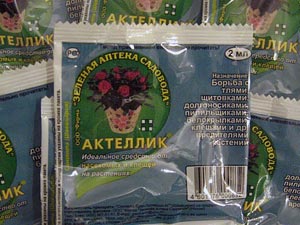 It is necessary to treat the flower with chemicals carefully, since ticks can fall into a state of diapause and successfully wait out the consequences of your procedure. By the way, before processing, remove all damaged leaves and flowers.
It is necessary to treat the flower with chemicals carefully, since ticks can fall into a state of diapause and successfully wait out the consequences of your procedure. By the way, before processing, remove all damaged leaves and flowers.
So, dissolve Actellik in the ratio indicated by the manufacturers. If you have a 5 ml ampoule, dissolve it in 1 liter of warm water and then pour it into a spray bottle. Spray the entire plant thoroughly. Places that are difficult to moisten with spraying can be wiped with a sponge soaked in the solution. It is desirable to spray not only the diseased plant, but also those that are nearby. I wipe the place under the flower with alcohol.
Safety precautions for insecticide treatment
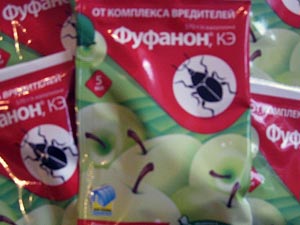 In the summer, I take the processed plants outside or into the bathroom if the processing takes place in the cold season. Actellik should not be sprayed in the presence of children and animals, since it is a hazard class 3 drug. Smoking while spraying is strictly prohibited.
In the summer, I take the processed plants outside or into the bathroom if the processing takes place in the cold season. Actellik should not be sprayed in the presence of children and animals, since it is a hazard class 3 drug. Smoking while spraying is strictly prohibited.
4.6363636363636 Rating 4.64 (11 votes)
Spider web on indoor flowers - what is it? affects almost all plants on all continents, does not reach only water ones. This tick lives everywhere, it is not there except in Antarctica. It often turns into a real disaster for indoor flower lovers.
What is a spider mite on indoor plants? This small insect, having the shape of an ellipse and reaching a size of up to 1 mm. They live in large colonies, settling under dry leaves left in a pot, or small clods of soil, on the back of a leaf.
Want to know more? Subscribe to our VK public, there is all the most delicious from the editors and interestingness from readers:
In contact with
Such a colony of hundreds of ticks, they actively reproduce, laying larvae. Ticks and larvae drink juice, for this they pierce the leaf and suck out the liquid from it. Spider mite on indoor plants - how to deal with it?
How to discover?
Spider mite on indoor plants - photo:
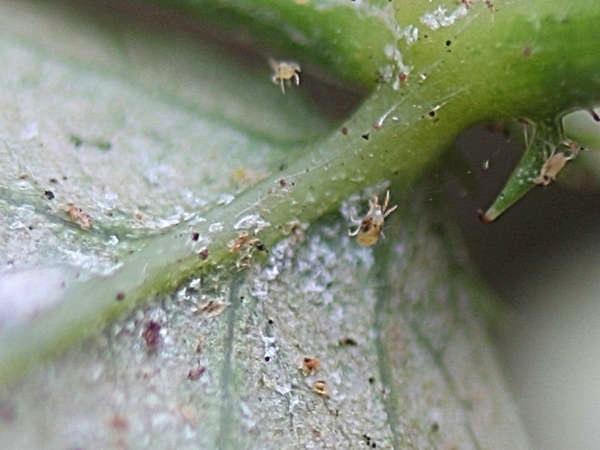
The leaves have numerous light spots, and if the colony is large, then the plant is covered with a thin, barely noticeable gossamer(hence the name of the tick) and very soon begins to dry.
They can be difficult to find due to too small size and color, helping to merge with the foliage (mites are brownish, greenish and yellowish). The females that stay for the winter are red in color.
Female ticks live less than a month, but during this period they are able to lay hundreds of eggs. New individuals appear in the clutch after three days. The biggest problem is that eggs remain alive until they are 5 years old.
They are waiting in the wings on the bark, in the axils of the plant, in the ground and even in window frames, on window sills and in the chipped flower pots. That is why the struggle with them is long.
Often a spider mite is brought from the shop, so a new plant should be quarantined for at least two weeks.
Tick species
Spider web on flowers: what to do? To understand how to remove a spider mite from indoor flowers, you need to know what they are. there are several types:
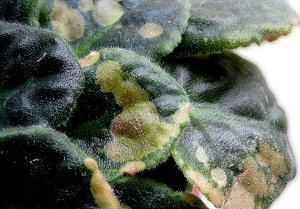
Indoor plants attack other types of putin mites: pacific, strawberry, red(flat).
All ticks are capable adapt to the most adverse conditions, slow down the processes of vital activity before the onset good conditions for reproduction. This state is called diapause.
How to fight at home?
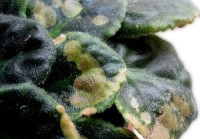 Fighting spider mites is difficult, so it's worth doing prevention.
Fighting spider mites is difficult, so it's worth doing prevention.
Most types of mites do not like moist air, and plants need to spray more often, keep moist at the right level in different ways.
Immersion of the plant in water rarely helps, because ticks are able to form an air bubble around themselves.
The leaves of the plant wipe both sides with a damp soft cloth, which must be constantly rinsed in hot water, so as not to transfer mites from plant to plant. Fallen leaves and flowers should not be left in the pot.
Pots before reuse must be washed with detergents, it is better to store them in rooms that are not heated in winter. Wash frames with detergents. Paint wooden frames as often as possible.
The spider mite not only harms the plant itself, but is also a carrier of various diseases, for example, gray rot and spores of various fungi.
Treatment
How to treat flowers from spider mites at home?
All means will be effective only if multiple processing. It is also necessary to process neighboring plants, frames and a window sill.
Treatment
How to cure flowers from spider mites? If a tick is found, the plant must first be thoroughly washed with laundry or tar soap. Lather each leaf and each bosom, whipping the foam with your hands and gently working all parts of the plant. Leave the flower for several hours (you can also for a day), covering it with a plastic bag. Then rinse thoroughly with a warm shower.
If the lesion was minor, then such a procedure will be enough, however, it is necessary be sure to repeat two or three times a week. The plant should be sprayed with warm water twice a day and inspected regularly.
Wash frames and window sill hot water with anyone detergent . The rest of the plants on the windowsill also need to be processed in order to prevention. Spider mite does not tolerate fresh air and ventilation.
What if the defeat has gone far enough? You must first treat with soap, then spray with preparations "Intavir", "Fitoverma", "Karbofos". When processing a window, it is also worth adding "Karbofos" to the water.
Sometimes it helps quite simple method: near the plant put an open container with finely chopped garlic or turpentine, tightly close the plant together with the container for 2-3 days. The edges of the pot must be lubricated tar.
Ways to fight on flowers
How to get rid of spider mites on indoor plants? For each plant, it is necessary to select an individual method of struggle.
Orchid
Spider mite on an orchid - photo:
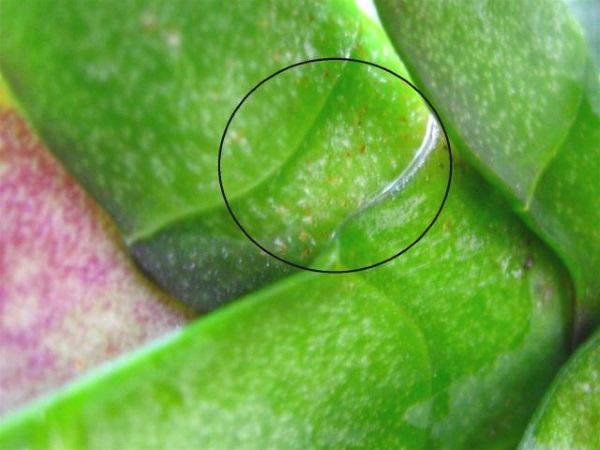
The flower is amazed many types of mites, for example, a phalaenopsis tick living in the sinuses. Spider mite on orchids - how to fight? First, the plant must be washed with soap and water, then treated with one of the chemicals, it is better to use a non-toxic "Fitoverm" or an aqueous solution of the drug "Aktellik".
Spider mite on an orchid: what are the control measures? To fight the tick, special sticks produced in Holland are used, which are stuck into the ground in a pot with an orchid. Action chopsticks "Plant-pin" and "Etisso" is based on the following principle: the substance of which they consist dissolves during irrigation, is absorbed into the ground and, together with water, is absorbed by the roots, from where it enters the ground part of the plant, the flower becomes unsuitable for ticks.
Soil, moss, orchid pots after purchase treated with boiling water for the prevention of spider mites.
What an orchid affected by a spider mite looks like and how to avoid plant infection - in this video:
Balsam
Ticks often infect balsams. If this happened at the end of summer, autumn or winter, then the plant must drastically cut. Wash the rest and treat with an insecticide, better drug "Alatar", since it is very difficult to get rid of a tick on a balsam.
Spider mite on balsam - how to fight? If infection has occurred in spring and summer, then the plant is treated with soapy foam, then sprayed with an insecticide, the procedure is repeated several times after 3-5 days. If the plant is not of particular value, it is better throw away and to prevent the appearance of a tick on other flowers.
Spider mite on balsam - photo:
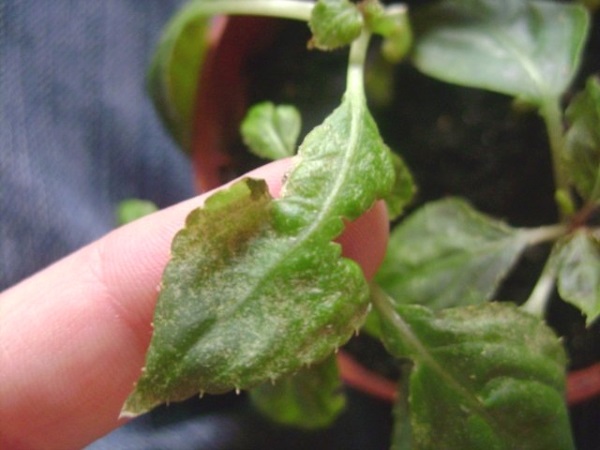
indoor rose
How to cure and save a rose from a spider mite at home? Spider mite on a rose room conditions appears constantly therefore it is important to carry out prevention. But if the plant is already affected, then treatment should be started as soon as possible. Are there home remedies for spider mites on roses?
On room rose a web appeared: what to do? First, you need to wash the rose with hot, up to 50-55 degrees, water with dissolved soap. Leave the plant for a day under a plastic bag and then rinse with water of the same temperature.
Then you need to try processing garlic infusion. If this does not help, then spray with any chemical preparation, it is better to use "Neoron".
How to use a spider mite remedy on a house rose? In each case, when you have to process a flower, you need to resort to the help of various chemicals.
Spider mite on a room rose - photo:
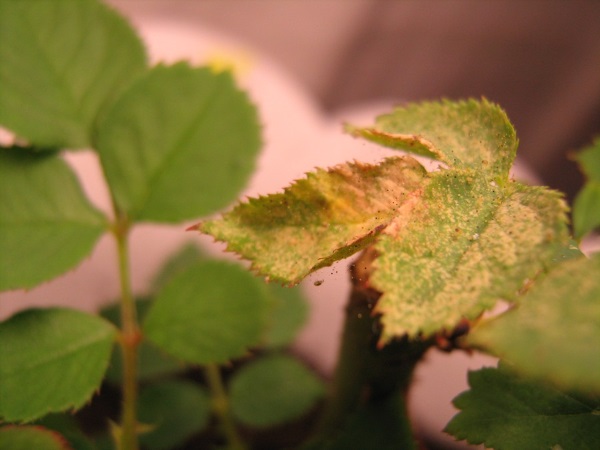
Spider mite on a home rose: how to fight?
About, how to process home rose from spider mites, you will learn by watching the video:
Several Yet useful tips About, how to get rid of from a spider mite on a rose at home, you will get from this video:
ficus
For the prevention of spider mites, ficus is necessary spray regularly. Spider mite on ficus - how to fight? In case of infection, thoroughly wipe each sheet on both sides well soaped with a rag and, having kept the plant for a day under a plastic bag, wash off the soap with warm water. Then you need to spray the ficus alcohol solution of calendula diluted with water, without missing a single sheet.
Effective leaf irradiation ultraviolet which ticks cannot stand. Ficus leaves can be covered oily drug and leave it like that for a few days.
Spider mite on ficus - photo:
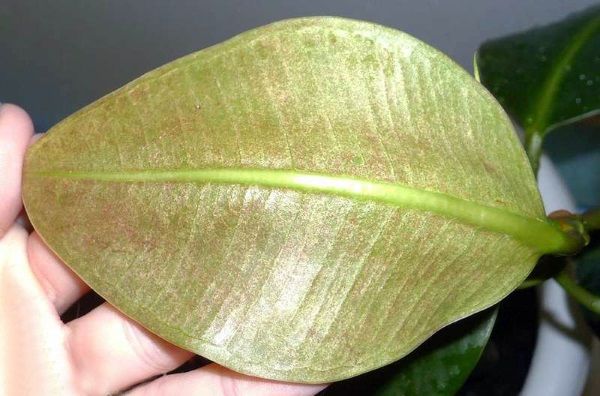
Anthurium
If numerous colonies of mites are found on a plant, it must first wash with soap, those leaves that are severely affected, cut out. Then remove from the pot, inspect the roots, remove the damaged ones, carefully wash the roots in warm water and transplant into a clean container in new soil.
Then spray the plant epin. As a rule, such treatment is sufficient.
But if it was not possible to get rid of ticks in this way, then you will have to resort to spraying more toxic drugs, for example "Karate".
Spider mite on anthurium - photo:
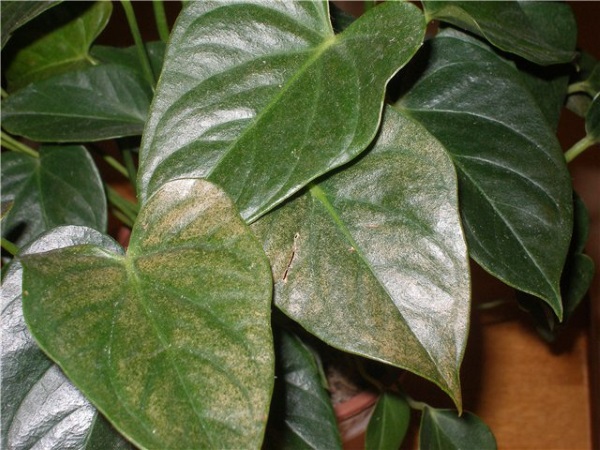
Violet
Most often, violets (saintpaulia) are affected by cyclamen mites. Cut off the affected leaves, then spray the flower with the preparation. Fitover, repeat the treatment twice in 10 days.
Spider mite on violet - photo:
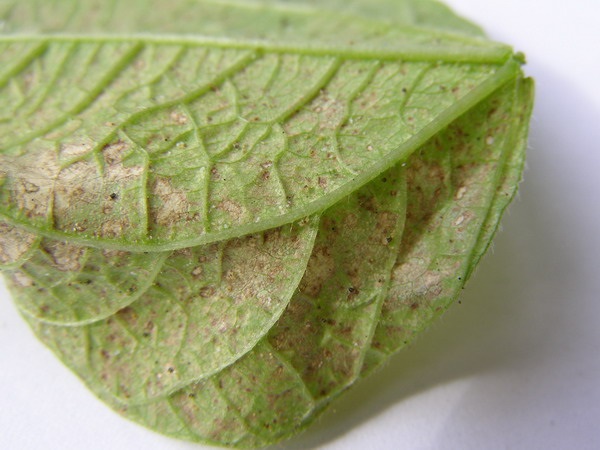
Dracaena
The plant infects a simple spider mite. The fight against it is to wash the long leaves in warm soapy water.
If, after repeated water procedures, the tick still remains, then you need to resort to an insecticide. For example, to "Fitovermu".
Spider mite on dracaena - photo:
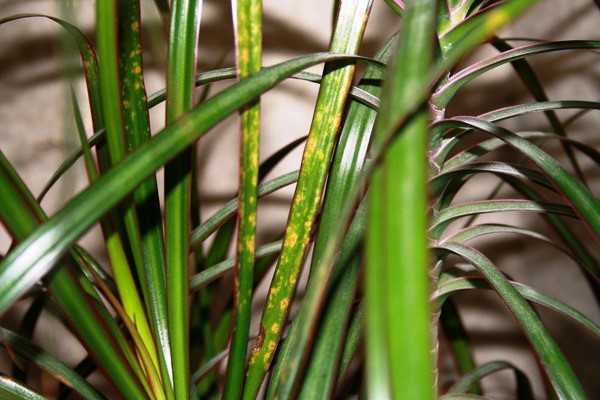
The most effective spider mite prevention on any houseplant is washing under a warm shower with laundry or tar soap.
In contact with
See inaccuracies, incomplete or incorrect information? Do you know how to make an article better?
Would you like to suggest photos for publication on a topic?
Please help us make the site better! Leave a message and your contacts in the comments - we will contact you and together we will make the publication better!









